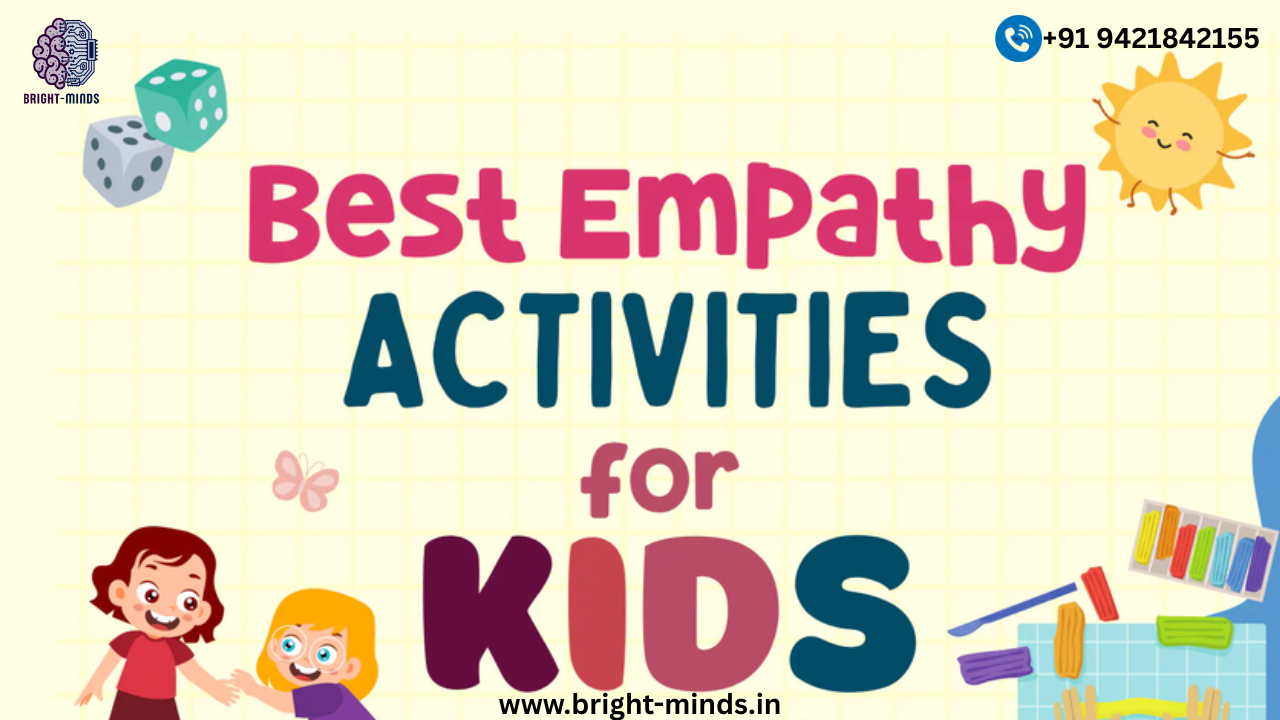- Model Empathy Through Your Own Actions
👨👩👧 Lead by example
Why it works:
Children learn by observing their parents and caregivers. If they see you showing empathy, kindness, and understanding toward others, they will be more likely to replicate these behaviors. Whether it’s comforting a friend, offering a helping hand, or expressing understanding during tough times, your actions speak louder than words.
Tip: Use phrases like, “I can see that you’re upset; let’s see how we can help,” or “It looks like they need some help, let’s pitch in.” This shows children how to respond empathetically in real-world situations. - Teach the Power of Active Listening
👂 Show them how to listen with intent
Why it works:
Empathy begins with understanding. Teach your child to listen closely when others are speaking, paying attention not just to the words, but also to the feelings behind them. When a friend or family member shares something, encourage your child to make eye contact, nod, and offer responses that show they care about the other person’s feelings.
Tip: Practice active listening at home during family conversations. Show your child that listening without interrupting and offering comforting words shows empathy. - Encourage Kindness in Everyday Actions
🌟 Make kindness a daily habit
Why it builds character:
Empathy grows from repeated acts of kindness. Teach your child to be kind in small, everyday actions—whether it’s helping someone with their homework, holding the door open, or saying something nice. By making kindness a regular practice, children internalize it as part of who they are.
Tip: Reinforce the importance of “please,” “thank you,” and “sorry,” and praise your child when they act kindly toward others. - Discuss Feelings and Emotions Regularly
💬 Help them recognize and express emotions
Why it’s essential:
In order to empathize with others, children first need to understand their own feelings. Discuss emotions regularly—both yours and theirs. Ask how they’re feeling and explain how different situations might make people feel. The more children talk about emotions, the easier it will be for them to recognize and respond to the feelings of others.
Tip: Use storybooks, movies, or real-life situations as examples to explore different emotions. Discuss what characters might be feeling and why, and ask your child how they would respond. - Encourage Perspective-Taking
🧠 Put themselves in others’ shoes
Why it’s powerful:
Empathy requires the ability to understand how someone else is feeling. Encourage your child to think about others’ emotions and imagine how they might feel in a given situation. Whether a friend is sad because they lost a toy or a sibling is upset because they didn’t get a turn, teaching your child to look at situations from another person’s perspective strengthens their empathy.
Tip: Play “What would you do if…” games or ask, “How do you think your friend felt when that happened?” to promote perspective-taking.
💡 How to Reinforce Empathy and Kindness Daily
- Use Positive Reinforcement: Praise your child when they show kindness or empathy, whether it’s comforting a friend or sharing their toys. Reinforcing these behaviors helps them understand what is expected.
- Create a Kindness Jar: Keep a jar where your child can add notes about kind actions they see or do each day. This helps them reflect on positive behaviors and the importance of kindness.
- Volunteer Together: Get involved in community service, like donating food or helping a neighbor. Volunteering together is a hands-on way to teach the value of empathy and caring for others.
- Read Books About Empathy: There are plenty of children’s books that teach empathy and kindness. Stories like “The Invisible Boy” or “Last Stop on Market Street” help children see the value of being kind to others.
Tip: Teach your child that showing kindness doesn’t always mean grand gestures. Simple acts, like saying something nice or lending a hand, go a long way.
🏫 Why Empathy and Kindness Matter
At Bright-Minds, we believe that teaching empathy and kindness early on creates compassionate individuals who are aware of the emotions and needs of others. These values help children build healthy relationships, develop emotional intelligence, and navigate social situations with confidence.
🌟 Final Thoughts
Teaching empathy and kindness isn’t just about saying the right things—it’s about creating opportunities for your child to practice these values in their everyday lives. By being intentional about kindness and showing empathy through action, you’re helping your child develop the emotional tools they need to thrive in a compassionate world.
You may also like this:-

